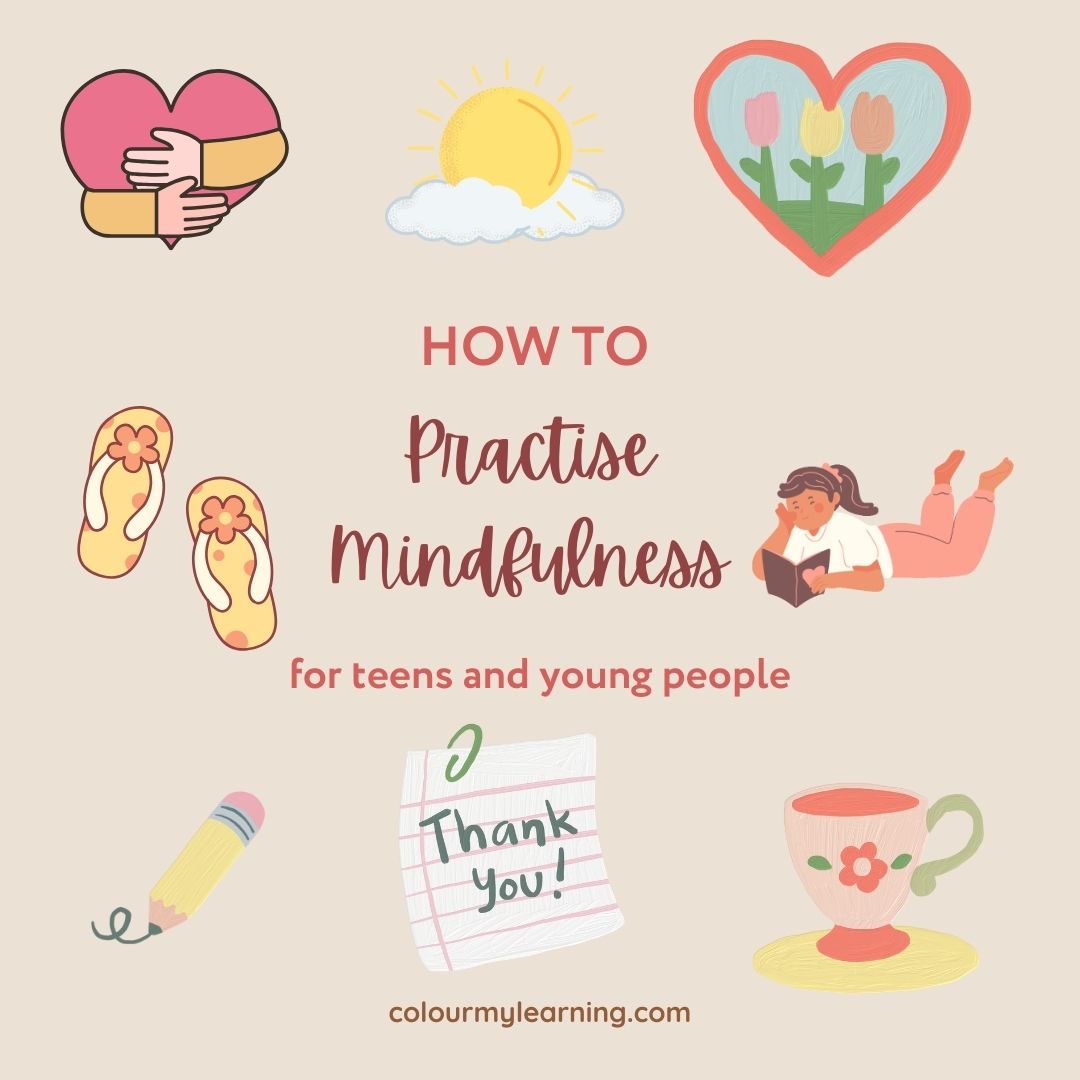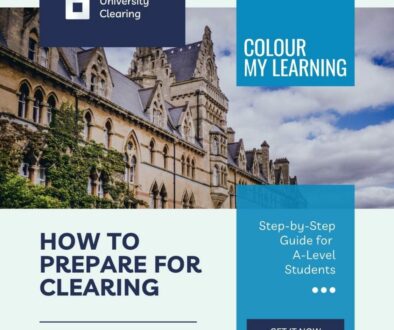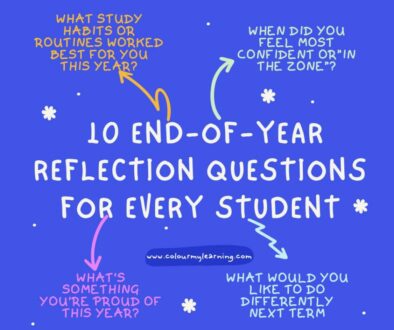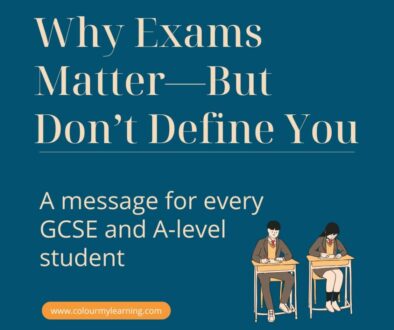How to Practise Mindfulness: A Guide to Staying Present for Students and Young People
In the fast-paced, digitally-driven world of today, students and young people face a never-ending range of distractions and pressures. From academic challenges to social media noise, the call for one’s attention is incessant and seemingly always present.
It becomes clear that in these demanding times, practising mindfulness becomes not just a luxury but a necessity. Mindfulness, which involves being fully present in the moment without judgment, can be a powerful tool for young individuals to navigate this complex and demanding landscape.

Benefits of Practising Mindfulness for Students and Young People
1. Improved focus and concentration
Regular mindfulness practice has been shown to enhance the ability to concentrate. The ability to take time out to simply focus on one things at a time ensures that the mind is not distracted. Being able to focus, and focus intently makes studying much more efficient.
2. Emotional regulation
Practising mindfulness helps in recognizing and managing emotions, reducing impulsiveness and outbursts. Typically, in practising mindfulness, one takes time to observe – one’s breath, emotions as they arise, reactions as you are prone to jump to. In taking time to simply stand back and observe yourself, somewhat detached, it allows you to gain a clearer understanding and emotional insight in to your own behaviour.
3. Reduction in stress and anxiety
Mindfulness techniques can help reduce the feeling of being overwhelmed. Again this is linked to the ability to learn to regulate emotions. When you are able to ‘stand aside’ and observe yourself impartially and non-judgementally, you begin to understand or at least learn to reflect on what, in the past, may have seemed like reactive responses. When you are able to take a more measured, calmer approach, you are also able to call on the more logical part of your brain that allows you to navigate emotional demands more reflectively. This helps particularly during exams or other high-pressure situations.
4. Enhanced social skills
The need to be fully present, even when you are in the company of someone else contributes significantly to improve one’s listening skills and thereby fostering better interpersonal relationships. To pay full attention to the person in front of you also ensures that you are building close, mutually respectful friendships.
5. Promotion of general well-being
Overall, practising mindfulness has been linked to increased feelings of contentment and well-being.

How to Practice Mindfulness for Students and Young People:
1. Start with Short Meditation Sessions
While the practise of meditation and mindfulness are not the same thing, even a 5-minute daily meditation can make a significant difference to your mental well-being. If you are new to meditation, you can use apps or online videos for guidance.
To begin focus on your breath, as you breathe in and as you exhale. If your focus is interrupted by wandering thoughts, simply draw your attention back to your breath and release the thoughts as they arise.
2. Mindful breathing
Whenever you feel stressed or distracted, take a minute to focus solely on your breathing. Inhale deeply, hold, and exhale slowly, concentrating on the rhythm. To help with focus, you can also count as you inhale, hold and exhale. You can use a 4-7-4 count or a 5-5-5 count anything which suits your breathing rhythm would work.
3. Mindful walking
Instead of rushing from one class to another or walking while engrossed on your mobile phone, try walking mindfully. Feel each step as you place your foot one in front of the other, be aware of your surroundings, and immerse yourself in the journey. Try not to be in a hurry to just get to the destination.
4. Digital detox
Allocate certain times of the day where you consciously stay away from screens. This helps in being present in the real world and reduces your reliance on the constant digital distractions. If your parents or friends expect you to be always present, it may be helpful to let them know, that from a specific time and day/date, you will be out of digital contact for a fixed amount of time.
While this can initially feel somewhat scary, after some tech/mobile-free sessions, it can ultimately feel quite freeing.
5. Practice gratitude
You can keep a gratitude journal where at the end of each day, you list three (or more) things you are grateful for. This shifts the focus from what is lacking or stressful to what is abundant and positive in your life. It helps you to focus on all the things you appreciate and are grateful for, and over time, you will realise, that there is far more to be thankful for than to complain about.
6. Mindful eating
Instead of eating on the go or in front of screens, take time to savour your food. Notice the taste, texture, and smell, and eat slowly. Give thanks and acknowledge the work and effort that has gone in to preparing and cooking your meal, however simple it may be.
Think about the origin of the food you eat. Consider the many hands and the many people who have had a hand in the making of your meal, from the farmer who planted the seeds and grew the crops to the harvesting and transporting; to the cooks and the preparation team and even the servers. Each meal takes a community of effort to arrive at your plate. Acknowledge this vast network of support and give thanks for it.
7. Stay curious
Instead of passing quick judgments about yourself or others, or making up your mind and being inflexible, try to be curious. For instance, if you’re feeling anxious, instead of dismissing it or ignoring it, delve deeper. Ask yourself, “Why am I feeling this way?” This builds a deeper connection with your own emotions.
8. Body scan
If you have a but short moment to reset. Try doing a body scan. Start from the tip of your toes and move upwards, noting how each part of your body feels. It is a great way to connect with your body and recognize any tension or stress. When you arrive at a part of your body that feels a little more tense, flex that muscle then consciously relax it. Do this for every part of your body if you can.
9. Join a mindfulness group
Many schools, colleges, and communities now have mindfulness or meditation groups. Joining these can provide guidance and a sense of community.
10. Mindful journaling
Similar to keeping a gratitude journal, a mindful journal allows you to dedicate a few minutes each day to write down your thoughts and feelings without any judgment. Over time this may help you recognize patterns of thought and of behaviour eventually leading to understanding oneself better.

Mindfulness Challenges and Tips
1. Consistency is key
Like any other skill, mindfulness requires regular practice. Start with a small and simple purpose but be consistent.
2. Be easy on yourself
It is natural for the mind to wander or for you to feel restless initially in the practise of meditation or of mindfulness. Instead of being hard on yourself, when you you’re your mind wandering, simply acknowledge it and gently bring your attention back.
3. Seek guidance
There are many resources available, from online videos or courses to books on mindfulness (search for Mindfulness books on Amazon). Make use of them.
Mindfulness, though a simple idea at its very core idea, can bring valuable changes when incorporated into daily life. For students and young people, amidst the chaos of growth, learning, and change, it can be the anchor that keeps them grounded.
References
1. Zimmerman, M. A. (2019). The effects of mindfulness training on academic stress and concentration among university students. Journal of College Student Development, 60(4), 486-491.(https://muse.jhu.edu/article/730558)
2. Kerrigan, D., Chau, V., King, M., Holman, E., Joffe, A., & Sibinga, E. (2019). There Is No Performance, There Is Just This Moment: The Role of Mindfulness Instruction in Promoting Health and Well-Being Among Students at a Highly-Ranked University in the United States. Frontiers in Education, 4(138). (https://www.frontiersin.org/articles/10.3389/feduc.2019.00138/full)
3. Dvořáková, K., Greenberg, M. T., & Roeser, R. W. (2019). Student engagement in school and benefit finding as protective mechanisms against academic stress. Psychology in the Schools, 56(8), 1320-1334. (https://onlinelibrary.wiley.com/doi/abs/10.1002/pits.22284)
4. Galante, J., Dufour, G., Vainre, M., Wagner, A. P., Stochl, J., Benton, A., … & Jones, P. B. (2018). A mindfulness-based intervention to increase resilience to stress in university students (the Mindful Student Study): a pragmatic randomised controlled trial. The Lancet Public Health, 3(2), e72-e81. (https://www.thelancet.com/journals/lanpub/article/PIIS2468-2667(17)30231-1/fulltext)
5. Regehr, C., Glancy, D., & Pitts, A. (2013). Interventions to reduce stress in university students: A review and meta-analysis. Journal of Affective Disorders, 148(1), 1-11. (https://www.sciencedirect.com/science/article/pii/S0165032712006994)
6. Brown, K. W., & Ryan, R. M. (2003). The benefits of being present: Mindfulness and its role in psychological well-being. Journal of Personality and Social Psychology, 84(4), 822-848. (https://psycnet.apa.org/record/2003-04224-011)
7. Powers, S. E., Laurent, H. K., & Gunlicks-Stoessel, M. (2016). The impact of mindfulness on eating, physical activity, and weight among college students: A systematic review. Mindfulness, 7(4), 799-810. (https://link.springer.com/article/10.1007/s12671-016-0518-z)











